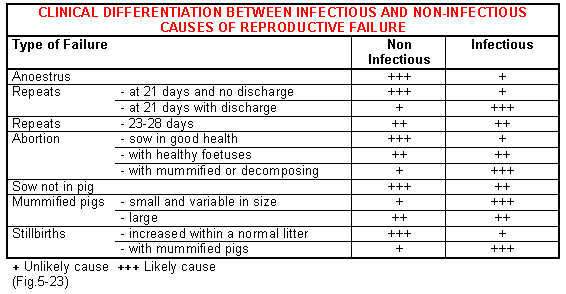



Losses from implantation
Approximately 2 days after fertilisation, the embryos, which are now beginning to increase rapidly in size, move down into the two horns of the womb. Over the next 5-7 days they migrate from one horn to the other, depending on numbers, so that they are spaced evenly between the horns. If the embryos die by day 4, there is no further development of the pregnancy and the sow returns on a normal cycle at 18-23 days. If less than 5 viable embryos remain in the womb at or around 12-14 days of age (the time of implantation) they are insufficient to maintain a pregnancy (Fig.5-14). In such cases there is likely to be a delayed return of between 24 and 30 days. Between days 12 and 14, the fertilised embryos become attached to the lining of the womb with the development of the placenta. Hormones are then produced which signal to the sow that she is pregnant. The corpus luteum in the ovaries increases in size and produces the pregnancy hormone progesterone. This stops the next oestrus cycle and pregnancy continues.
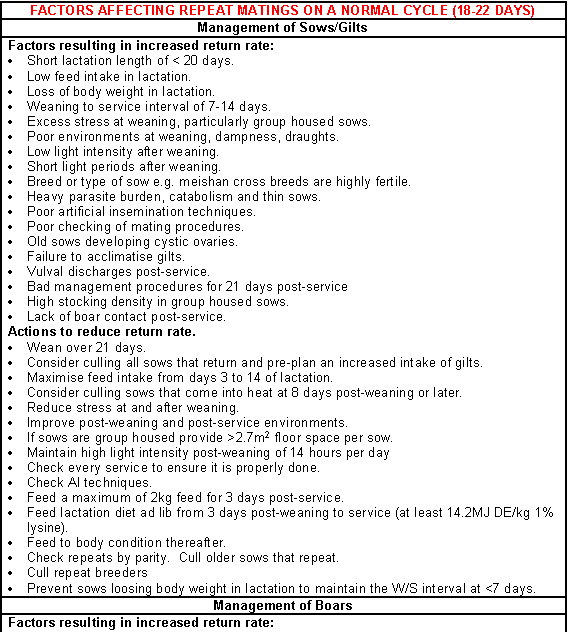
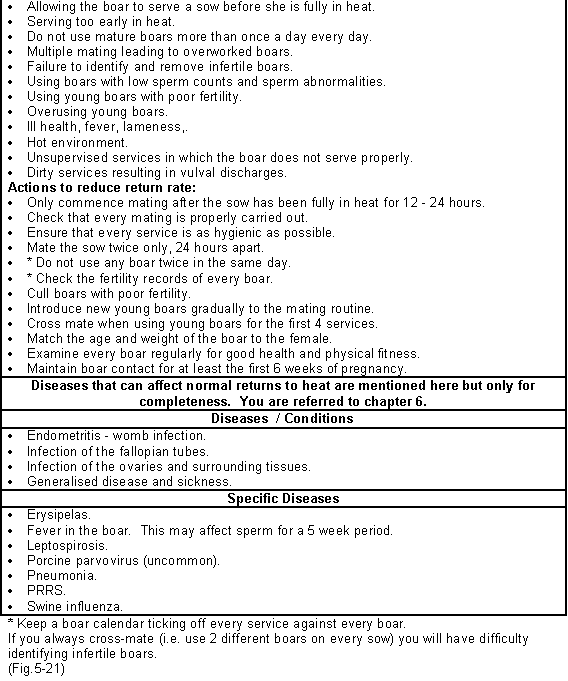
Irregular repeat matings occurring
Returns to heat can occur on a regular cycle every 18 - 22 days or on an irregular or abnormal cycle of 23 - 36 days or longer. Sometimes sows thought to be close to term (approaching farrowing time) are found to be not in pig. One major reason is as follows. If there are insufficient embryos to establish a pregnancy at 14 days, (less than 5) they progressively die off, are absorbed and the sow will return at an irregular interval. This could vary anywhere between 23 and 100 days post-service. However, once pregnancy has been established and embryos continue to die, then as long as one piglet remains alive the pregnancy will continue to term. Thus, if we have very small litters born of 3, 4 or 5 piglets and no mummified ones we know that there have been major problems occurring between approximately days 14 and 30 post-service. Factors that need to be considered with sows found not to be pregnant with delayed repeats are highlighted in Fig.5-22. The normal level should be less than 3% of matings.
Check the various points in Fig.5-22 for corrective action in your herd. Boar factors are usually of low priority for abnormal repeats because the failures are much more likely to be of a maternal nature. However, the overuse of boars resulting in poor conception and poor viability of embryos with progressive embryo loss should not be overlooked.
Any generalised disease of the sow could result in embryo mortality. Unless there are clinical signs in the herd, such factors will usually be of an individual nature. This highlights the importance of individual records and the need to collect data on the farrowing rate loss analysis sheet.
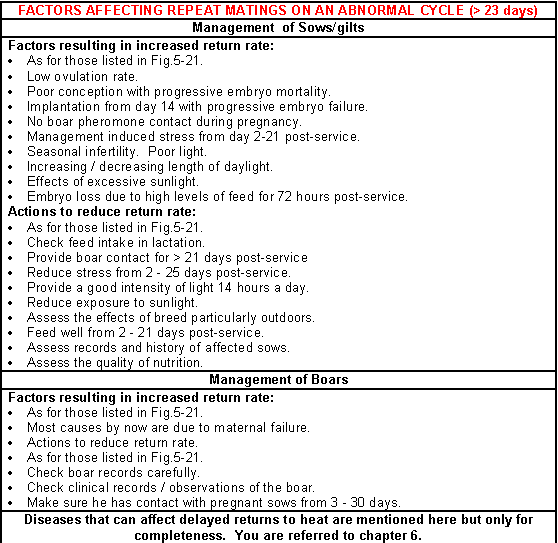
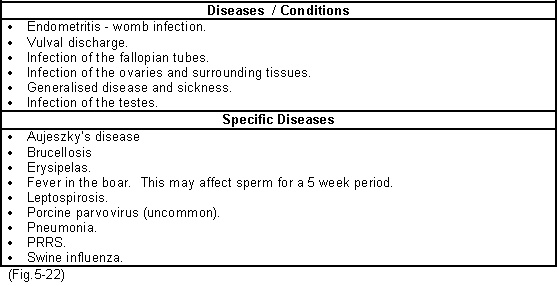
For specific information regarding the diseases refer to chapter 6. For clarity between infectious and non infectious causes also study Fig.5-23. Pregnancy failure from point of service to the point of implantation is often due to ascending infection of the womb (endometritis). In such cases a clear or opaque light discharge of the vulva will be seen 14-21 days post-service with such animals repeating. See chapter 6 vulval discharges.
